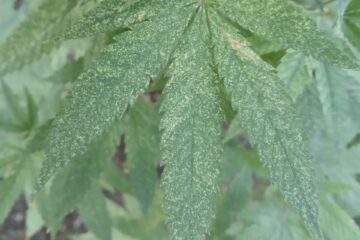Coco peat is a great growing medium. Buffering it with calcium will ensure best results. It is a necessary process to mitigate any risks and give your plants the best chance of success. You won’t be sorry. This is our guide on how to buffer coco peat.

Cultivate Cannabis For The First Time – A How To(Opens in a new browser tab)
Why grow in coco peat?
Advantages include it’s ability to hold water as well as air. It’s natural pH is around 5.5 (perfect for hydroponics) and it’s inert, providing no nutrients to plants. In addition, Coco allows for good root development and is also re-usable. The biggest plus is it’s cation exchange capacity (CEC). This is represented as a number and gauges the ability to transfer nutrients to plants. Coco’s CEC can be as high as 400, while a good quality soil is around 80-100.
However, there are some down sides. Coco has a lot of natural salts in it. pH correction is needed for any water or nutrient solutions. Growing with coco also means you need to buffer with calcium.
Why buffer coco peat?
Coco peat often has high levels of potassium and sodium. The aim of buffering is to get the coco to release those ions and replace them with calcium.
What is calmag?
Calmag is a short name for calcium nitrate and magnesium nitrate fertilizers. They are usually mixed at a 5:1 ratio. Found in many forms like liquids or granules and from many brands. For this post, we’ll stick to granule form.
Calcium is vital in cell structure and for general health and growth. Magnesium is important for photosynthesis. It aids in the activation of many plant enzymes needed for growth and aids protein synthesis.
Calcium Nitrate(Opens in a new browser tab)

How to expand coco peat.
Place the amount of coco you would like to expand in a large container adding plenty of water. Or expand with boiling water if you’d like a sterile medium. This will kill any bacteria or insect eggs that may be hiding. Be careful not to burn your self.
Your coco and water should be like a thick soup. Coco peat quality can differ, where sand or gravel can be found after expanding. By adding a large amount of water, the unwanted heavy stuff will sink to the bottom.
Simply scoop out your coco with a sieve or the like, leaving sediments behind. Place the washed coco in a fabric pot or porous bag. Your are now ready to buffer your coco peat.
How to buffer coco peat
Time needed: 2 hours and 30 minutes
Items needed – large container, coco peat, calcium granules, porous bag, water
- Fill container half way with water.
Get a container or bucket, one that the bag of expanded coco fits into and fill half way with water.
- Dissolve calcium nitrate.
Add 3 grams of calcium granules for every liter of water. Make sure all the calcium is dissolved. If you have an EC or TDS meter, you want your solution to be around 3.0-4.0, or 1500-2000PPM.
- Place coco peat in a porous bag.
This allows you to separate the coco peat from the solution a lot easier and will save a lot of time.
- Soak coco peat in buffering solution.
Place your porous bag of coco peat into the solution, leaving it to soak for no less than 2 hours. Do not soak for more than 24 hours.
- Rinse the coco peat.
Remove the coco from the buffering solution. You can either rinse under running water, the time will depend on how much coco is being rinsed. Alternatively, refill the container with fresh water, soaking for another 2 hours.
- Let the coco peat dry.
Although your coco peat is ready to use, it’s wet and heavy. Leave the coco in the bag for a day or two to dry. This will make it less messy and lighter to work with.
- Ready to use.
Your coco peat is now buffered correctly and ready to use.

Maintenance
The trick now is to continue adding calmag to your nutrient schedule with every feeding, unless flushing your plants. This will make sure you don’t run into problems down the line with calcium deficiencies leading to others. A good rule of thumb is to take your nutrient solution EC to 0.4-0.5 with calcium products before adding your usual 3 part nutrient. More on that here with our How to Mix A Hydroponic Nutrient Solution
Alternatively you can purchase washed and buffered coco peat here:
Coco Peat – Washed & Buffered(Opens in a new browser tab)



1 Comment
5 Disadvantages Of Coco Peat: What You Need To Know · February 17, 2025 at 11:31 am
[…] Coco peat is high in potassium and sodium. This can be beneficial for some plants, but too much potassium can be detrimental to other plants. Too much sodium can cause leaf burn. And be mindful of the other nutrients in your coco peat mix, as the high potassium levels can affect their absorption. […]